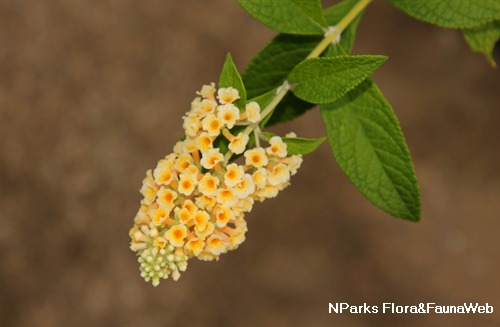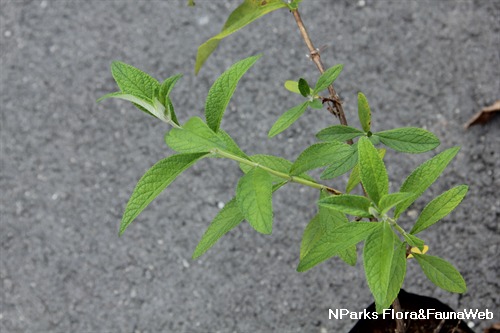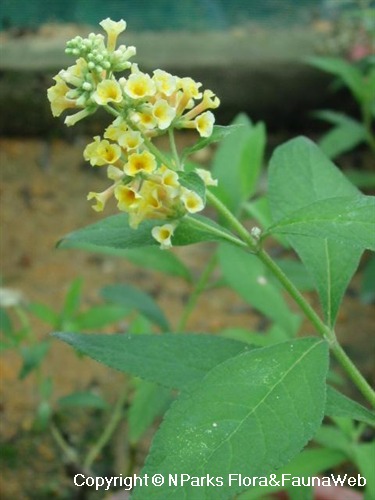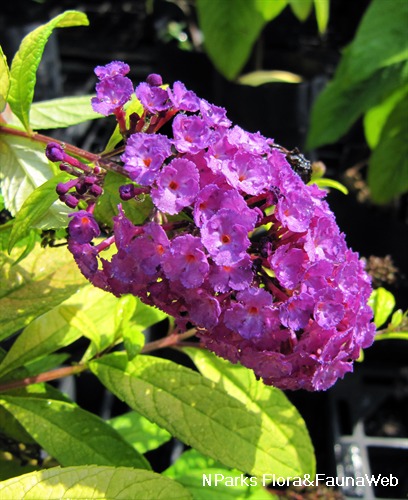
Back
Buddleja × weyeriana 'Honeycomb'
| Family Name: | Scrophulariaceae |
| Synonyms: | Buddleja 'Honeycomb' |
| Common Name: | Butterfly Bush |
Name
Classifications and Characteristics
| Plant Division | Angiosperms (Flowering Seed Plants) |
|---|---|
| Plant Growth Form | Shrub |
| Lifespan (in Singapore) | Perennial |
| Mode of Nutrition | Autotrophic |
Biogeography
| Native Habitat | Terrestrial |
|---|---|
| Local Conservation Status | Non-native |
Description and Ethnobotany
| Growth Form | Shrub, able to grow up to about 1.5 - 2.5 m tall. |
|---|---|
| Foliage | Silvery leaves, lanceolate, measuring about 20 cm long. |
| Flowers | Creamy yellow flowers in globe-shape panicles, sweet fragrance. |
| Others - Plant Morphology | This is a hybrid from Buddleja davidii var. magnifica x Buddleja globosa. |
| Etymology | Genus Buddleja is named after Reverend Adam Buddle (1660 – 1715), who is an English vicar and botanist of Farnbridge. |
Landscaping Features
| Desirable Plant Features | Ornamental Flowers, Fragrant (Flowers) |
|---|---|
| Landscape Uses | General, Parks & Gardens, Small Gardens |
Fauna, Pollination and Dispersal
| Fauna Pollination Dispersal Associated Fauna | Butterfly-Attracting |
|---|---|
| Pollination Method(s) | Biotic (Fauna) |
Plant Care and Propagation
| Light Preference | Full Sun |
|---|---|
| Water Preference | Moderate Water |
| Rootzone Tolerance | Well-Drained Soils, Fertile Loamy Soils |
| Maintenance Requirements | High |
Foliar
| Foliage Retention | Evergreen |
|---|---|
| Mature Foliage Colour(s) | Green |
| Foliar Type | Simple / Unifoliate |
| Foliar Arrangement Along Stem | Opposite |
| Foliar Attachment to Stem | Petiolate |
| Foliar Margin | Crenate |
Floral (Angiosperm)
| Flower Colour(s) | Yellow / Golden |
|---|---|
| Flower Grouping | Cluster / Inflorescence |
| Flower Location | Axillary, Terminal |
| Inflorescence Type | Panicle |
Image Repository
Others
| Master ID | 31373 |
|---|---|
| Species ID | 5770 |
| Flora Disclaimer | The information in this website has been compiled from reliable sources, such as reference works on medicinal plants. It is not a substitute for medical advice or treatment and NParks does not purport to provide any medical advice. Readers should always consult his/her physician before using or consuming a plant for medicinal purposes. |






